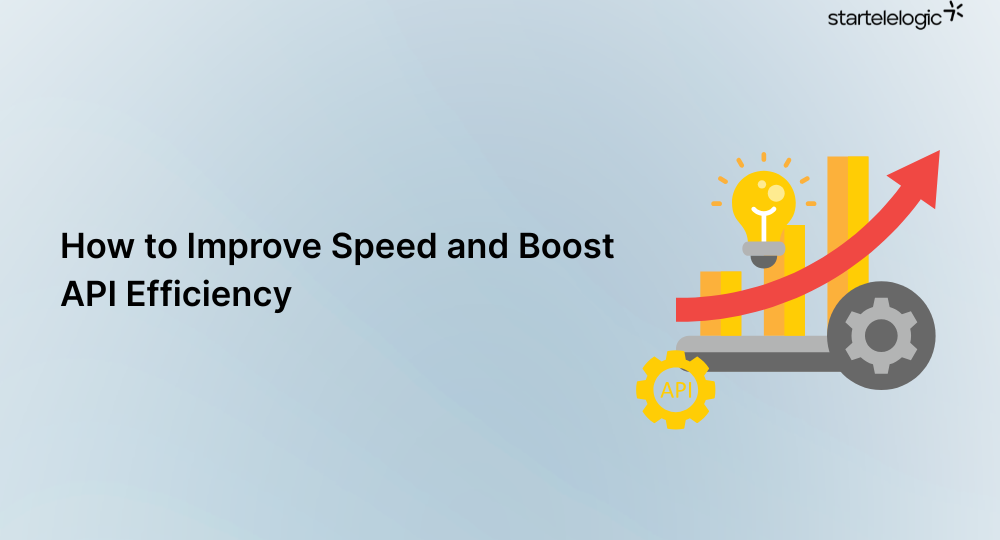Customer portals have evolved into the central hub for account management, service access, order tracking, and support requests. Modern users expect portals to respond instantly, load seamlessly across devices, and integrate smoothly with backend systems. Even a slight delay creates frustration, raises abandonment rates, and impacts customer trust. In fact, studies show that a 1-second delay in page response can result in a 7% reduction in conversions, while 53% of mobile users abandon a site that takes longer than 3 seconds to load. This makes Customer Portal Performance Optimization essential for delivering the fast, reliable, and engaging experiences that today’s customers demand.
Customer portal performance optimization is no longer a technical luxury—it is a business necessity. Speed directly influences customer satisfaction, search engine rankings, and overall digital competitiveness. Research indicates that improving website speed by just 0.1 seconds can boost conversion rates by up to 8%. This article provides advanced strategies for optimizing both the portal front end and the underlying APIs to deliver consistently superior digital experiences.
The Business Case for Customer Portal Performance Optimization
Performance directly impacts revenue, retention, and brand reputation. Businesses that ignore optimization pay the price in lost customers and higher infrastructure costs.
Retention Impact
A slow or leggy portal frustrates users and pushes them toward competitors. Customers who encounter delays while logging in, viewing dashboards, or submitting requests are less likely to return. On the other hand, fast-loading portals encourage repeat use, driving loyalty and reducing churn.
Conversion Rates
Speed influences behavior at every step of the customer journey. In e-commerce portals, a slow checkout can cause cart abandonment. In service portals, a delayed form submission can discourage users from completing a transaction. Optimized performance directly increases the likelihood of successful interactions and higher sales.
Operational Efficiency
Every extra millisecond of API response time compounds across thousands of requests. Unoptimized systems waste server resources and increase costs. Performance improvements allow infrastructure to handle more traffic with fewer resources, improving cost efficiency and enabling scalability.
Competitive Edge
In crowded markets, a smooth portal experience differentiates a brand. Customers subconsciously associate speed and reliability with professionalism and trustworthiness. A fast portal signals that the business values its customers’ time and invests in quality.
The conclusion is clear: performance optimization fuels growth. Enterprises that continuously improve their portals consistently outperform competitors on digital experience metrics.
Core Pillars of Customer Portal Performance Optimization
Front-End Responsiveness
The front end is the customer’s first interaction, and it sets the tone for the entire experience. Studies show that users form an impression of a digital platform within milliseconds. If the portal interface takes longer than three seconds to load, customers often abandon it regardless of backend power.
- Efficient Asset Delivery: Compressing images, minifying JavaScript and CSS, and adopting next-gen formats like WebP or AVIF drastically reduce file sizes. For example, an insurance company that switched its portal images to WebP cut page load time by 25%.
- Asynchronous Loading: Prioritizing core content ensures users see what matters first. Dashboards, login forms, and essential data should appear instantly while secondary scripts (ads, analytics, animations) load in the background.
- Caching Strategies: Browser caching for static elements like logos and stylesheets prevents redundant downloads. Content Delivery Networks (CDNs) extend this by caching files closer to users geographically.
- Responsive Design: A mobile-first approach is critical. Since a majority of users access portals through smartphones, designs must adapt seamlessly to smaller screens, touch navigation, and variable network speeds.
When executed well, front-end optimization not only improves speed but also creates a sense of simplicity and confidence in the portal.
API Performance and Reliability
While the front end shapes first impressions, the real work happens behind the scenes through APIs. Every portal action—fetching account details, updating records, or generating reports—relies on API calls. Slow APIs create bottlenecks, no matter how polished the interface.
- Low Latency: Critical APIs should consistently respond in under 200 milliseconds. Anything slower becomes noticeable and disrupts the flow of customer interaction.
- Load Balancing: Distributing API requests across multiple servers prevents overload and ensures consistent response times during peak demand.
- Efficient Communication Protocols: REST remains common, but alternatives like GraphQL reduce over-fetching by allowing clients to request exactly what they need. gRPC provides lightweight, real-time communication ideal for microservices.
- API Caching: Frequently requested data, such as product catalogs or account summaries, should be cached at the edge or in memory. This minimizes database hits and accelerates responses.
- Resilience: APIs must handle failures gracefully. If one service is unavailable, fallback responses or cached data should prevent errors from surfacing to the customer.
Case in point: A global telecom provider reduced API latency by 40% after switching from REST to GraphQL and deploying edge caching. The result was a measurable increase in portal adoption and customer satisfaction.
Database Optimization: The Silent Backbone
APIs are only as good as the databases powering them. Poorly tuned databases create delays even if APIs are well-designed.
- Indexing and Query Optimization: Indexing frequently queried fields prevents slow table scans. Streamlined queries reduce unnecessary data retrieval, cutting execution times.
- Connection Pooling: Reusing existing database connections instead of creating new ones lowers overhead and boosts efficiency.
- In-Memory Caching: Systems like Redis or Memcached serve “hot” data instantly, reducing load on the database.
- Sharding and Replication: For high-traffic portals, databases can be divided (sharded) into smaller, manageable parts or replicated across multiple nodes to handle heavy read and write operations.
An e-commerce portal that implemented Redis caching saw its average API response time drop from 350ms to under 100ms, directly reducing cart abandonment rates.
Infrastructure and Scalability for Peak Performance
No portal can remain fast without robust infrastructure. As user traffic grows, backend systems must scale dynamically to prevent bottlenecks.
- Cloud Auto-Scaling: Platforms like AWS and Azure allocate resources automatically during peak loads, ensuring portals remain responsive.
- Containerization and Orchestration: Docker and Kubernetes provide modularity, allowing individual services to scale independently based on demand.
- Content Delivery Networks (CDNs): CDNs cache and deliver static content closer to users, drastically reducing latency.
- Edge Computing: Processing data at the network edge brings computation closer to customers, improving real-time responsiveness.
A leading bank implemented Kubernetes-based scaling for its customer portal, enabling it to handle a 5x surge in traffic during tax season without downtime.
Security Without Sacrificing Speed
Security is non-negotiable, but heavy security measures often slow performance if not carefully implemented. The goal is to protect customers while keeping portals fast.
- Token-Based Authentication: Lightweight tokens such as JWT provide stateless authentication, reducing repeated database lookups.
- TLS Termination at the Edge: Encrypting traffic at the CDN level reduces backend processing burden.
- Rate Limiting: Protecting APIs from abuse without throttling legitimate users ensures safety and performance coexist.
- Zero Trust Architecture: Verifying every request regardless of source ensures distributed endpoints remain both secure and agile.
When designed thoughtfully, security becomes invisible to users. They enjoy a safe experience without encountering frustrating delays.
Continuous Monitoring and Measurement
Optimization is never a one-time project. Continuous measurement ensures performance improvements last as traffic and systems evolve.
- Key Metrics: Track page load time, first input delay (FID), API latency, and error rates. Apdex scores translate these into customer satisfaction indicators.
- Monitoring Tools: Google Lighthouse helps assess front-end health. Grafana and Prometheus provide backend performance dashboards. Platforms like Datadog or Dynatrace deliver full-stack observability.
- Proactive Alerts: Automated monitoring should trigger alerts before performance issues affect customers.
Businesses that monitor proactively identify bottlenecks faster and resolve issues before they impact customer trust.
Common Pitfalls in Portal Performance
Several mistakes often undo optimization efforts. Businesses sometimes treat performance as a one-time project instead of a continuous responsibility. Another common pitfall is ignoring mobile optimization, even though mobile users now dominate portal traffic.
Overloading portals with third-party scripts, widgets, or tracking codes is another frequent mistake. These may add functionality but often drag down performance. Poor caching strategies, reliance solely on backend data calls, and lack of proper monitoring further contribute to slow, inefficient portals.
The Future of Customer Portal Optimization
Emerging technologies are redefining how portals will perform in the future. Protocols like HTTP/3 and QUIC are designed to deliver faster performance even on unstable mobile networks. Serverless architectures promise instant scalability with no idle costs, while AI-driven caching predicts user behavior and preloads content before it is requested.
Progressive Web Portals (PWPs) are expected to replace traditional portals in many industries, combining the reach of web platforms with the speed and interactivity of mobile apps. Deep observability tools will make it possible to pinpoint slowdowns across complex microservice environments within seconds.
Conclusion
Customer Portal Performance Optimization is far more than a technical exercise. It is about building trust, improving retention, reducing operational costs, and strengthening brand reputation. A fast, secure, and reliable portal tells customers that the organization values their time and their experience.
From front-end streamlining to API efficiency, from database tuning to infrastructure scaling, and from security design to continuous monitoring, every layer of the system matters. Businesses that invest in performance as a continuous discipline will not only meet rising customer expectations but also stand out in an increasingly competitive digital landscape.
In today’s environment, where digital experience defines brand loyalty, the fastest and most reliable portals will always lead.




